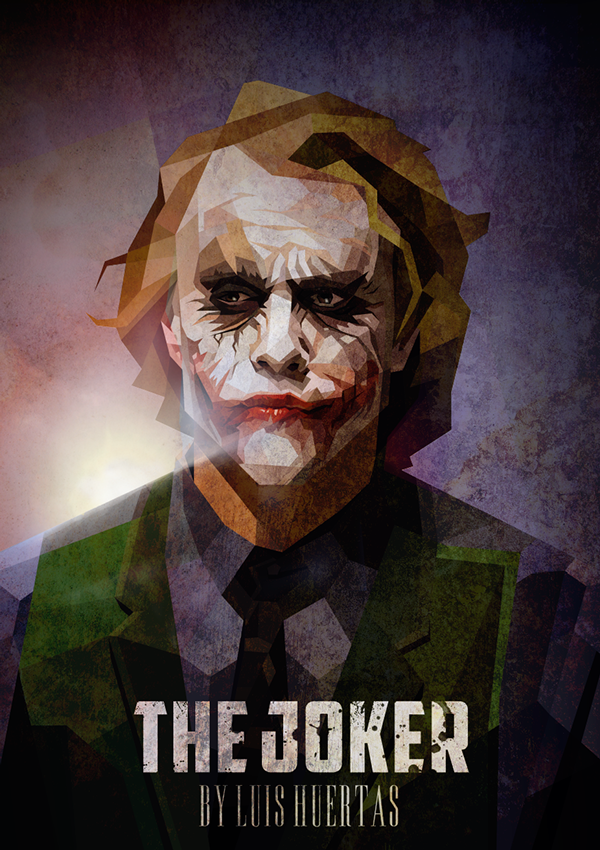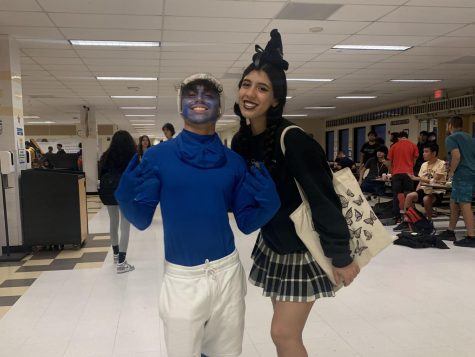The man who laughs is no joke
The evolution of the character grows its darkest yet in “Joker”
Luis Huertas “The Joker / Cubismo”
“Joker” is the highest grossing movie of 2019 that isn’t a Disney or Marvel movie, making $572 million as of Oct. 14.
In 1940, the iconic Clown Prince of Crime made his debut in the comic “Batman #1.” Initially, he wasn’t supposed to be the psycho that he is depicted as today; he started as just a thief but now is revered as a murderous psychopath with one intention: to make Batman break his moral code. In other words, he wants to drive Batman to kill, breaking his ethical and moral ideals. He even believes he and Batman are two sides of the same coin. In the comic “Batman: The Killing Joke” by Alan Moore, the Joker says a final joke to Batman about two insane asylum inmates who are escaping. All they have to do is jump between two rooftops over the gap between them. The first one jumps across with ease, but the second one thinks he can’t make the jump. The first man tells the second guy that he’ll shine his flashlight over the gap so he can walk over it, but the second guy doesn’t trust the other guy.
It’s less of a joke and more of a metaphor. The first guy who gets across the gap represents Batman, who is arguably just as crazy as the Joker but channels it in a different way, while the second man represents the Joker who didn’t escape the asylum and never had the influences Batman had. The point of this story is that Batman and the Joker are like Yin and Yang: one is light and one is darkness, and they cannot exist without the other.
Along with multiple variations of the Joker in the DC comics, there have been several variations on the big and small screen. The most notable of the live action variations are Caesar Romero’s portrayal in the “Batman” television series (1966-1968), Jack Nicholson’s performance in the movie “Batman” (1989) and the iconic Heath Ledger in “The Dark Knight” (2008).
The latest installment starring Joaquin Phoenix as the infamous “man who laughs” takes place while Bruce Wayne is still a child and details the Joker’s life pre-Batman. This adaptation is a completely original story that hasn’t been told in the comics or any show or movie previously.
Junior Bria Weisblat is excited to see a more unique take from the comics that is less fictional and more real “world-ish.”
Phoenix plays Arthur Fleck, a struggling comedian who, after a tough life, just snaps. “Joker” is a story about a man who is rejected by society and is mentally broken, allowing him to take the position of the insane villain known and loved to the DC universe. To play this character, Phoenix reportedly lost 52 pounds in a very short time frame, which severely affected him psychologically. Phoenix discussed with The Independent that he read a book regarding political assassins which explains the actions committed in the film and their corresponding personalities.
The film starts off with a clear understanding of what Fleck’s life is like: he lives in an apartment in a run down building, living with his mother, working as a clown for hire. “Joker” is a psychological thriller in which any viewer is torn between whether they should feel bad for the main character or if they should despise him. While the film isn’t full of action, the entirety of it feels intense and hard to look away from. Even though the viewer knows that he’s going to kill people and inevitably become Joker, it still employs a sense of surprise and anxiety aided by the eerie score. One scene in particular–now known as the infamous stair scene–adds to the suspense of the story. In this scene Arthur begins to fully embrace his insanity and dances down the stairs, splashing in puddles to the beat of the song “Rock and Roll Part 2” by Gary Glitter. In contrast to the scores heard previously, this song is more upbeat and gives the audience a feeling of emotional confusion and a sense of distrust.
Not only is it the highest grossing movie with an October release date, but “Joker” is now the highest grossing R rated film ever with a box office earning of $849 million, beating ‘Deadpool” which made $783.1 million.
Joker is rated R for “strong bloody violence, disturbing behavior, language, and brief sexual images.”









